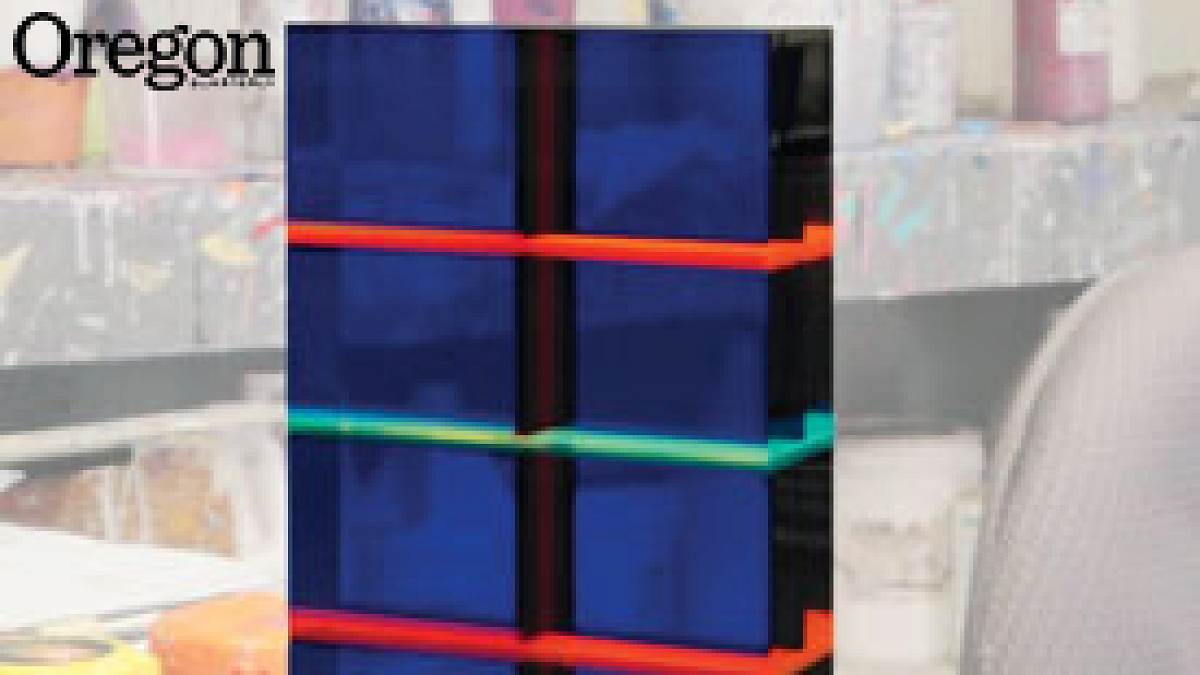Every fall the same ten friends attend the fiercest rivalry in the Pac-12, the Oregon Ducks vs. the Washington Huskies. I’m a Duck, my husband Jim’s a Husky, the eight friends are a mix, and we have plenty of time on the train from Seattle to Eugene to trade team jabs and predict the score. In Eugene, we take over a bed and breakfast, and 2010 was no different, except that the Sunday after the game was our twenty-fifth wedding anniversary. In a postgame coma and on a train all day back to Seattle, we knew the last thing we’d feel like doing was celebrating the milestone when we got home. So we arranged to fly from Eugene to Phoenix and steal a few days of sunshine.
Initially it seemed possible to pack for both trips—the damp chill of Eugene’s Autzen Stadium and the seventies predicted in Arizona. We could send our game clothes home with friends and desert garb doesn’t take up much room. When we started to consider what we’d really need in both places, however, packing seemed more complicated. But our daughter volunteered to do a bag swap at SeaTac airport, where we had a layover for two hours anyway.
The previous spring, Jim and I had flown to San Francisco for a getaway weekend and spent our last morning at that city’s Museum of Modern Art. We’d been there once before, when it first opened, and, as designers, admired the building as much as the art. We meandered through the gift shop on our way out as we always do, rarely buying anything but appreciating the well-designed merchandise.
On shelves backlit by a strong sun, an acrylic sculpture caught Jim’s eye. The artist was Vasa, known for his small acrylic cubes. But this was larger, maybe ten inches tall, a monolith made up of planes of blue, red, yellow, and green. There were two others—an arch in orange and a pyramid in green—but it was the monolith and its deep cobalt blue that attracted him. On the plane home from San Francisco, I realized it was a perfect anniversary gift and I was smugly proud that I had six months to spare.
But going home from that trip meant picking up our regular life—work, writing, dinners with friends—and the sculpture was forgotten. Two months passed before I made the time to call the gift shop. All three of the sculptures in the window were gone. Where could I get one? The saleswoman suggested two other contemporary museums. No luck. I checked eBay and found Vasa’s work, but not the monolith. Summer passed and I occasionally checked some websites, each time kicking myself for not calling the museum sooner. Then in September I hit the jackpot, finding the number and address for his studio in Los Angeles. I e-mailed. Vasa himself e-mailed back. He gave me an assistant to work with, and she sent a photo of the piece to assure we were discussing the same thing. I sent the check and had the sculpture mailed to a neighbor, so Jim wouldn’t see the package. I was excited and relieved.
As they had for years, the Oregon Ducks won the match-up last year—53–16. Sunday morning in Eugene, Jim and I woke to an early alarm because we had to catch our plane to Phoenix. The monolith was in a padded case in the bag my daughter would hand off to me at SeaTac. Jim turned the light on in our room and handed me a wrapped gift.
“I thought we were doing presents tonight,” I said, because we had reservations at a special place on Camelback Mountain.
“I know, I just want to do it now.”
The package was rectangular and sharp-edged. Heavy, too, and though I couldn’t believe it, I knew what it was. The monolith. For a wild minute or two, my heart lowered into my stomach and I was filled with disappointment, all the while giving him my best attempts at being pleased and surprised. But then I realized how fitting it was that we’d chosen the same gift for this memorable anniversary. At the time we got married, out of the thousands of wedding cards in the world, we’d both—on our own—selected the same one to give each other.
I didn’t let on to Jim about my gift, just carted my new monolith carefully to breakfast to show it off. At SeaTac, our daughter dutifully showed up for the luggage swap. One acrylic monolith went back with her, one joined me on the plane to Phoenix, disguised in its zippered bag.
Dinner that night, to say the least, included a second big surprise.
—By Martha Clarkson
Martha Clarkson manages workplace design for Microsoft. She is also a poet and fiction writer, and recipient of a Washington State Poets William Stafford Award and a Pushcart nomination. Her work is listed under “Notable Stories” in Best American Nonrequired Readings for 2007 and 2009. She is the poetry editor for Word Riot.


